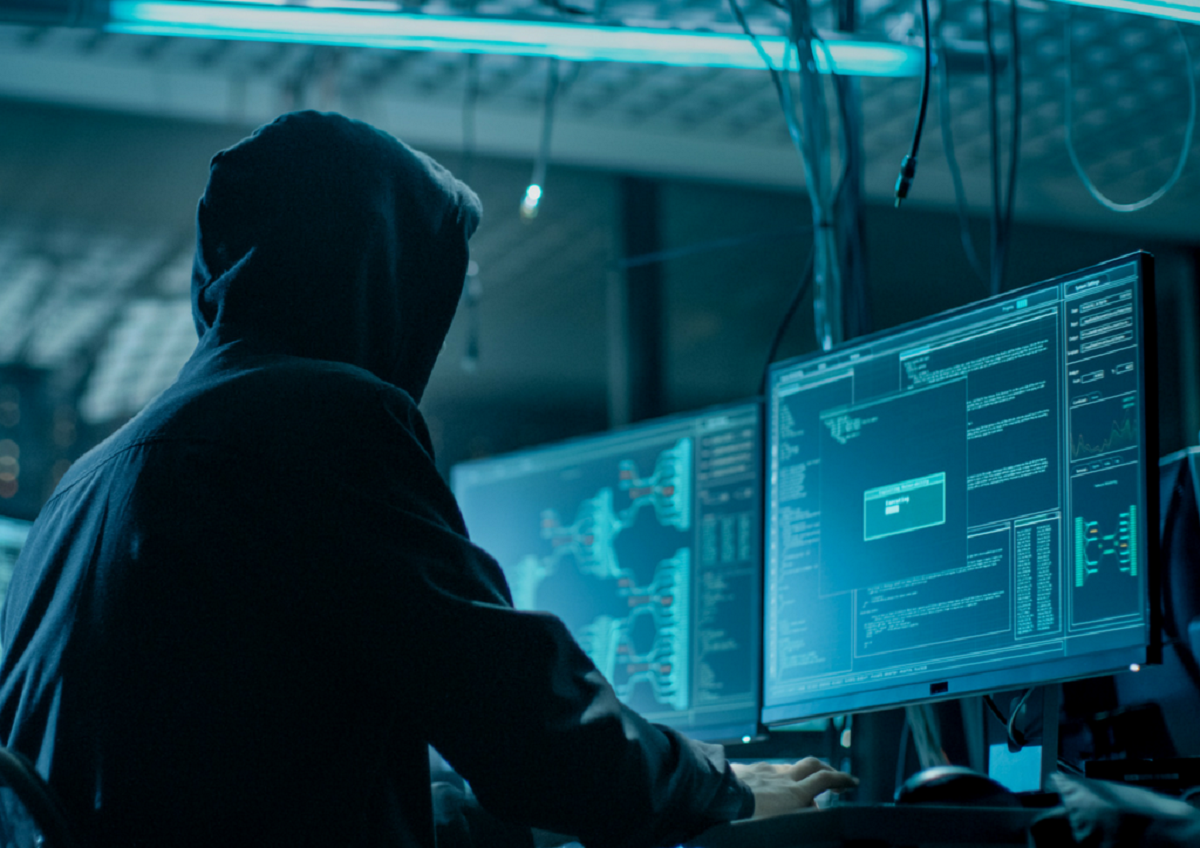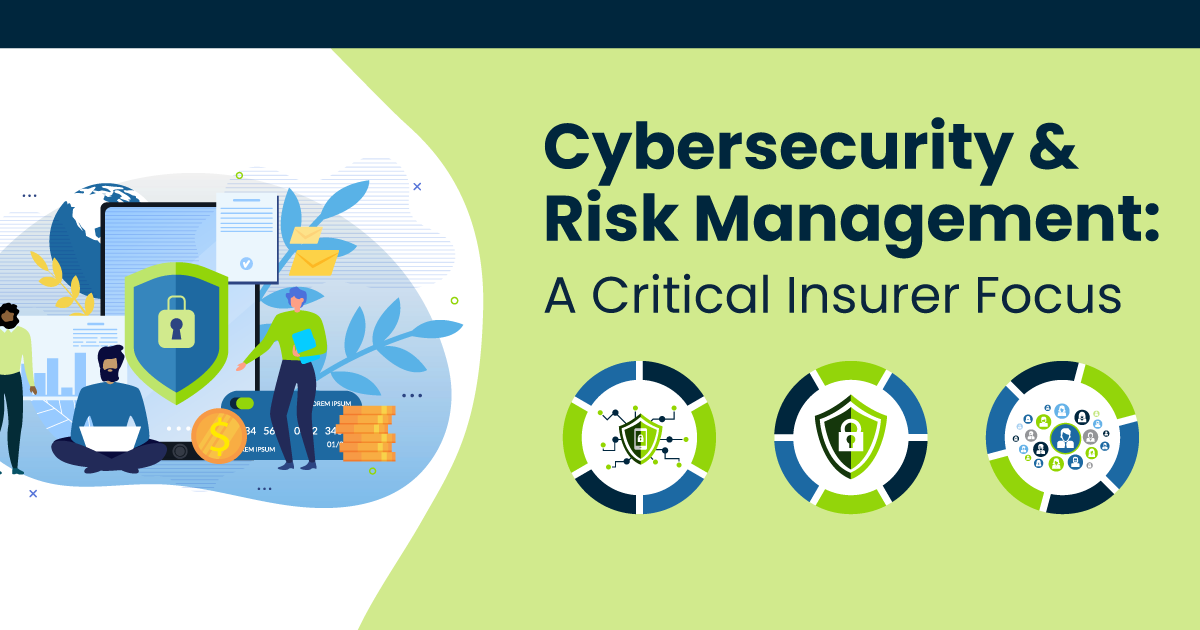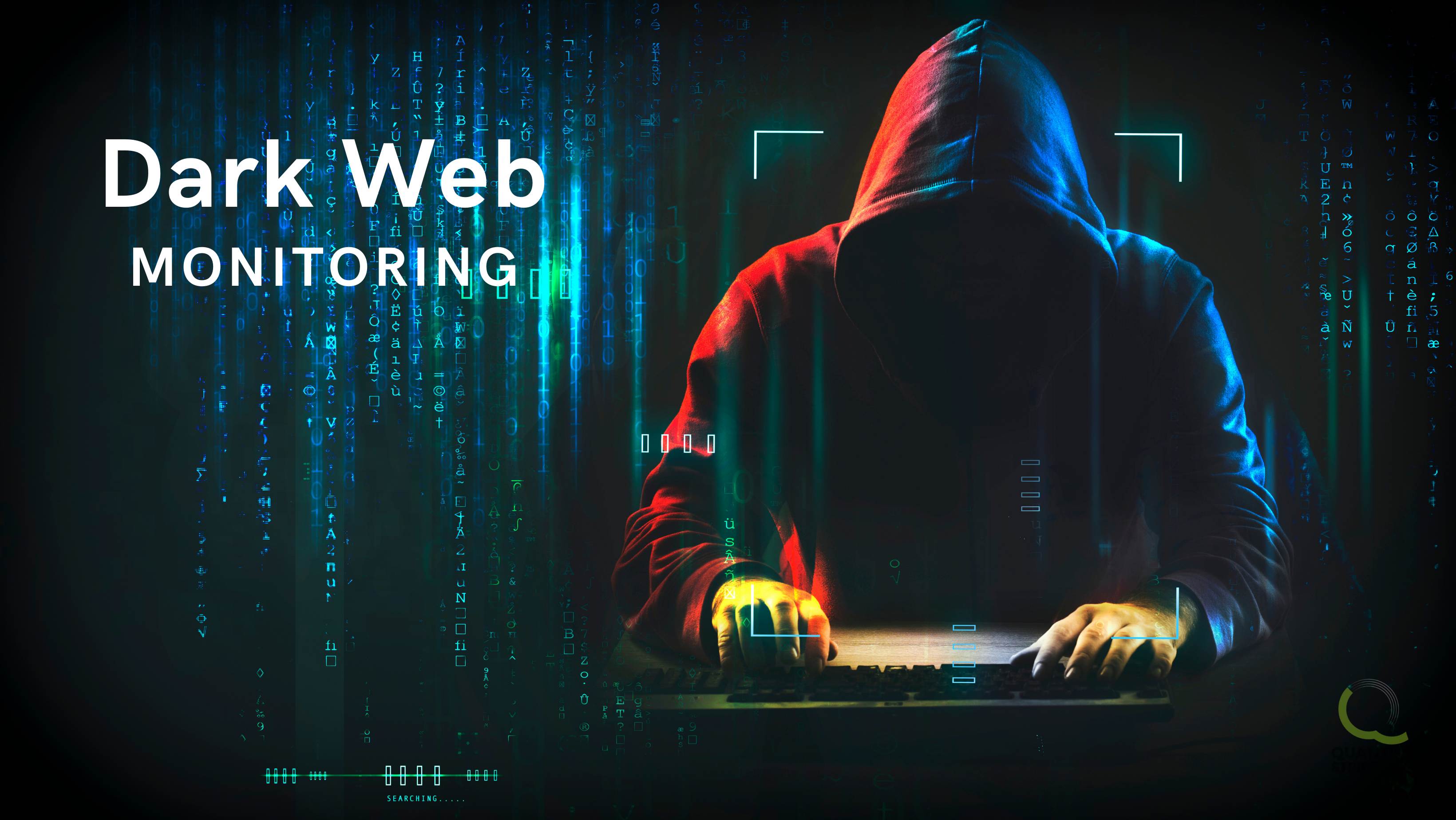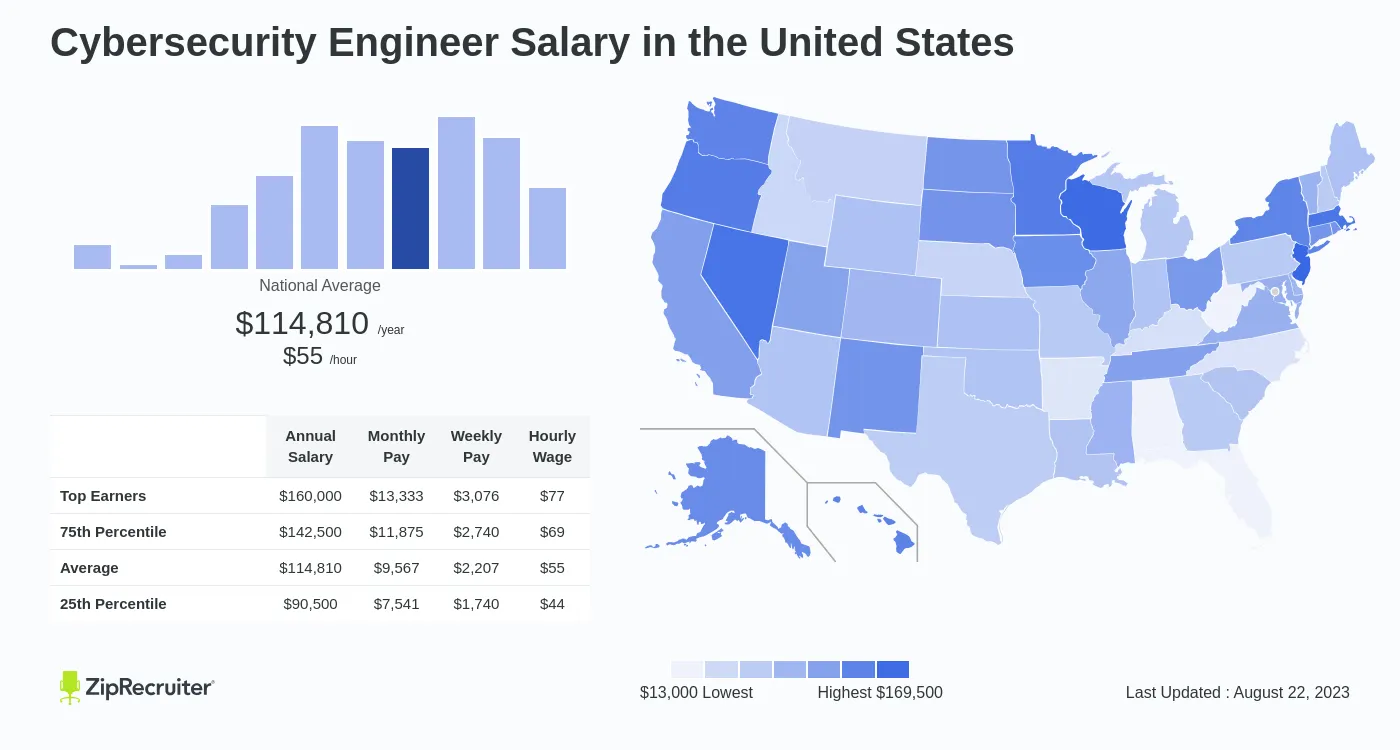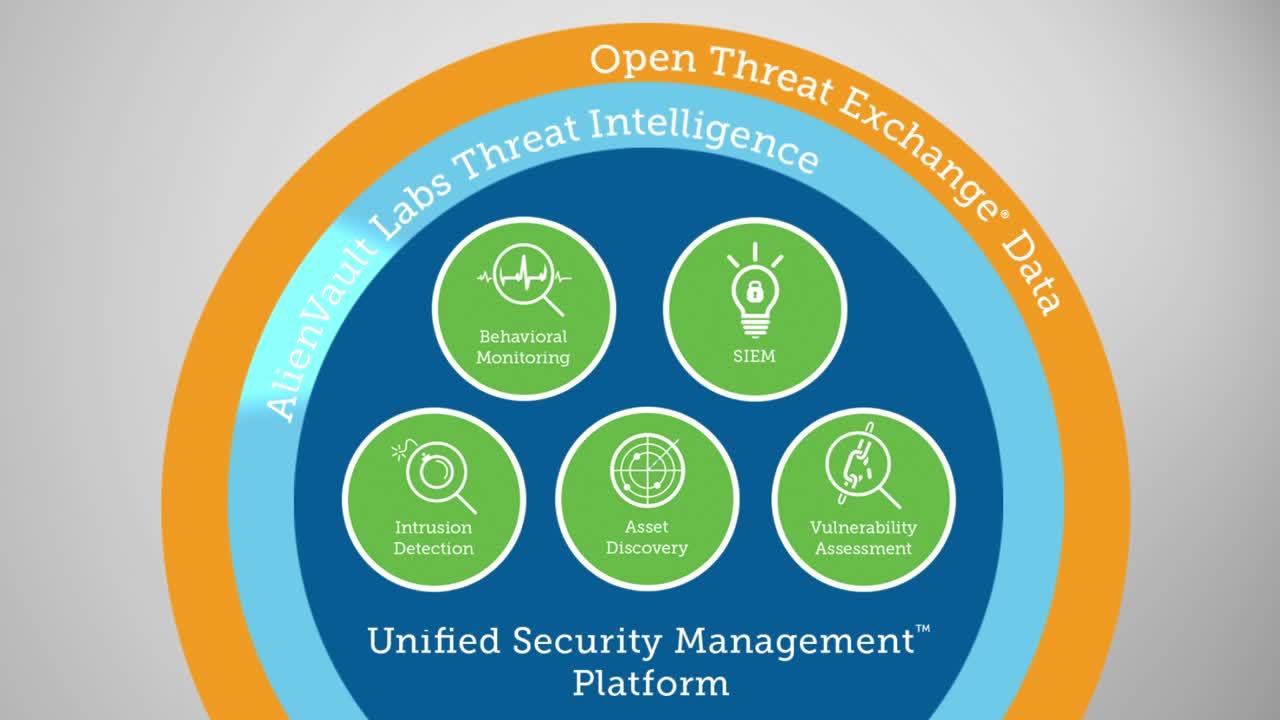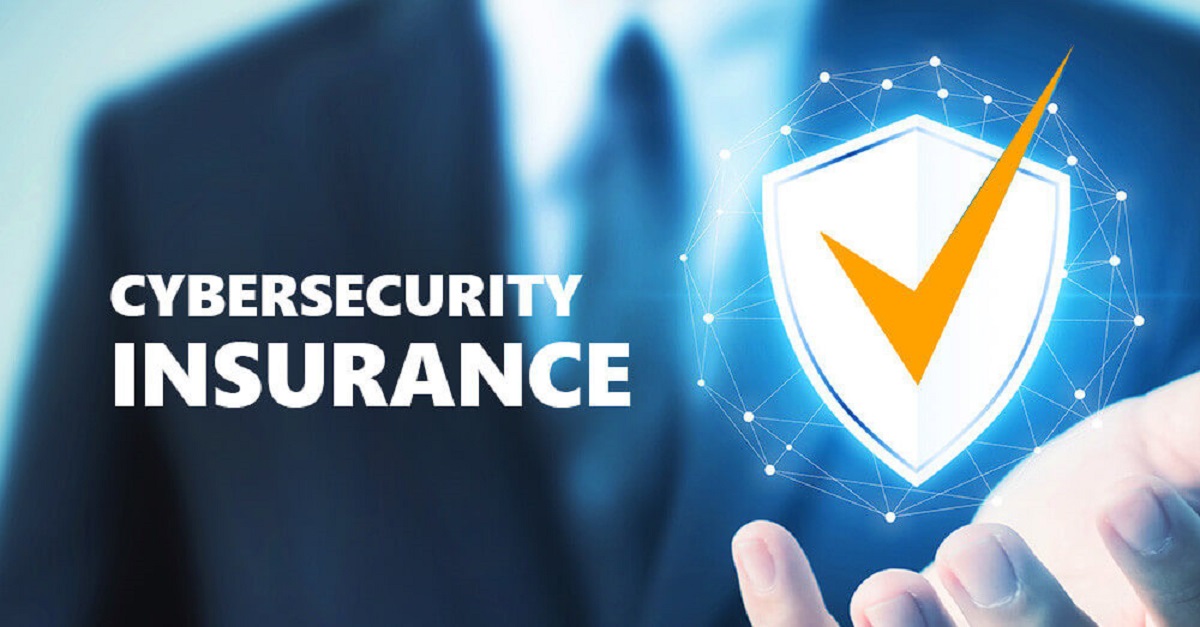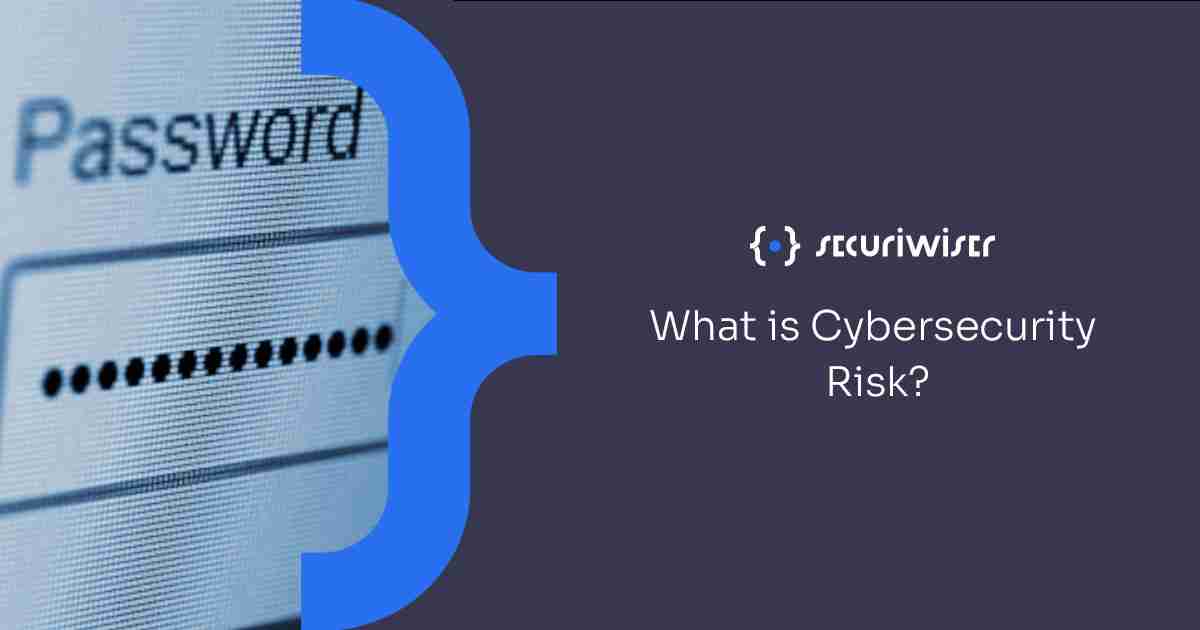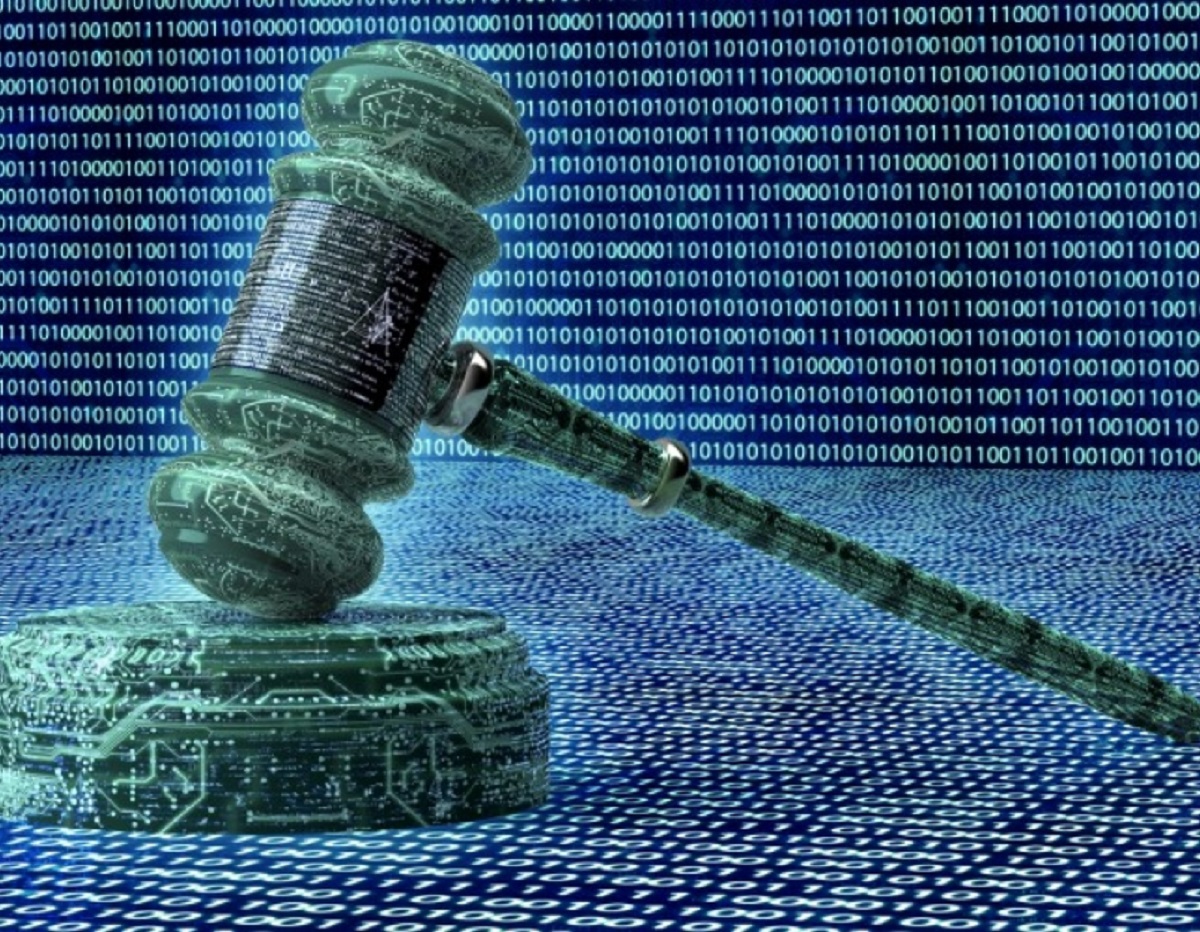Introduction
Cybersecurity has become a critical concern in today’s digital age. With the increasing reliance on technology and the prevalence of online threats, the need to protect our digital assets and sensitive information has never been more crucial. From individuals to large organizations, cybersecurity affects everyone in some way or another.
In this article, we will explore the various stakeholders and sectors that are impacted by cybersecurity. By understanding the wide-ranging effects of cyber threats, we can better grasp the importance of implementing robust security measures and staying vigilant in the face of emerging risks.
From individuals who use personal devices to store sensitive data to multinational corporations managing vast networks of information, the implications of a cyber attack can be disastrous. Small businesses, large organizations, government agencies, and non-profit organizations all have vulnerabilities that can be exploited by malicious hackers seeking financial gain or to disrupt operations.
The healthcare industry, with its vast repositories of patient records and highly sensitive data, is a prime target for cybercriminals. Financial institutions, too, are attractive targets due to the potential for monetary gain. The education sector, transportation and logistics industry, energy and utilities sector, retail and e-commerce industry, and entertainment and media sectors are also at risk.
As technology continues to advance and our reliance on interconnected systems increases, so too does the importance of protecting our digital infrastructure from cyber threats. Safeguarding sensitive information, ensuring the integrity of online transactions, and preserving the privacy and confidentiality of digital communications are critical tasks that must be prioritized across all sectors and industries.
With the introduction of new technologies such as artificial intelligence, blockchain, and the Internet of Things, the cybersecurity landscape is constantly evolving. It is imperative for individuals and organizations to stay up to date with the latest security protocols, invest in robust defenses, and promote a culture of cybersecurity awareness.
In the following sections, we will delve into the specific implications of cybersecurity on individuals, small businesses, large organizations, government agencies, non-profit organizations, and various industries. By understanding the unique challenges and vulnerabilities faced by these entities, we can work towards creating a more secure digital environment for all.
Individuals
Cybersecurity concerns are not limited to organizations and businesses; they also have a significant impact on individuals. In today’s interconnected world, people store and share vast amounts of personal information online, making them potential targets for cybercriminals.
One of the key threats individuals face is identity theft. Cybercriminals may steal personal information such as social security numbers, bank account details, and login credentials to gain unauthorized access to financial accounts or commit fraud. This can result in substantial financial losses and damage to a person’s credit rating.
Another common threat is phishing attacks, where individuals receive fraudulent emails or messages that appear legitimate, tricking them into revealing sensitive information or clicking on malicious links. These attacks can lead to data breaches or the installation of malware on personal devices, compromising privacy and security.
In addition to financial risks, individuals may also face the violation of their privacy. With the increasing prevalence of smart devices and the Internet of Things, hackers can gain unauthorized access to webcams, home security systems, and other connected devices, invading people’s private spaces and compromising their personal lives.
Moreover, the proliferation of digital platforms and social media has made individuals vulnerable to cyberbullying, online harassment, and reputation damage. Personal information shared on social media can be exploited by malicious individuals, affecting not only an individual’s online presence but also their mental and emotional well-being.
Protecting oneself from these threats requires adopting cybersecurity best practices. This includes using strong, unique passwords for all online accounts, enabling two-factor authentication, regularly updating devices and software, and being cautious of suspicious emails or messages. It is also essential to educate oneself about common cybersecurity threats and stay informed about the latest security measures.
By being proactive and taking appropriate precautions, individuals can significantly reduce their vulnerability to cyber threats. It is imperative for everyone to prioritize cybersecurity, not only to safeguard their own personal information but also to contribute to a more secure digital environment for all.
Small Businesses
Small businesses are often an attractive target for cybercriminals due to their limited resources and potentially lower levels of cybersecurity infrastructure. A successful cyber attack can have devastating consequences for these businesses, including financial losses, damage to reputation, and even closure.
One primary concern for small businesses is the theft of customer data. From credit card information to personal details, customer data is a valuable commodity in the cybercriminal world. A data breach can not only result in legal consequences but also erode customer trust and loyalty.
Small businesses also face the risk of ransomware attacks, where cybercriminals encrypt their data and demand a ransom to release it. This can bring business operations to a grinding halt, causing significant financial losses and disruptions.
Moreover, small businesses may fall victim to phishing attacks and other social engineering techniques. Employees could unknowingly disclose confidential information or click on malicious links, compromising the security of their systems and networks.
Cybersecurity awareness and employee training play a crucial role in mitigating these risks. Small businesses should educate their employees about the latest scams and social engineering tactics, promoting a culture of cybersecurity within the organization.
Implementing robust security measures is also vital for small businesses. This includes installing firewalls and antivirus software, regularly updating software, regularly backing up data, and securing wireless networks. Small businesses can also benefit from outsourcing their cybersecurity needs to specialized providers who can offer advanced threat detection and monitoring.
Collaboration and information sharing within the small business community can also be advantageous. By sharing knowledge and experiences, small businesses can stay informed about emerging threats and effective cybersecurity strategies.
While small businesses may face resource constraints, investing in cybersecurity is crucial for their survival and growth. By prioritizing cybersecurity, small businesses can protect their sensitive data, preserve their reputation, and maintain the trust of their customers and business partners.
Large Organizations
Large organizations, with their vast networks, extensive databases, and high-profile operations, are prime targets for cyber attacks. The potential impact of a successful attack on a large organization can be far-reaching, affecting not only the organization itself but also its employees, customers, and stakeholders.
One of the most significant cybersecurity concerns for large organizations is data breaches. Any breach in security can result in the theft or exposure of sensitive information, including customer data, financial records, and intellectual property. This not only has financial implications but can also lead to legal consequences and damage to the organization’s reputation.
Cyberattacks on large organizations can take various forms, including ransomware attacks, distributed denial-of-service (DDoS) attacks, and advanced persistent threats (APTs). These attacks can cause service disruptions, financial losses, and brand erosion.
Large organizations also face insider threat risks, where employees or contractors with privileged access may intentionally or unintentionally compromise data security. Implementing robust access control measures and regularly monitoring user activities can help mitigate this risk.
The complexity of large organization networks and the multitude of endpoints make them vulnerable to vulnerabilities in software and systems. Regular patch management, vulnerability assessments, and penetration testing are crucial to identifying and resolving security weaknesses.
Given the significant cybersecurity risks they face, large organizations must invest in advanced security technologies and solutions. This includes intrusion detection and prevention systems, security information and event management (SIEM) systems, and continuous monitoring tools.
Moreover, fostering a strong cybersecurity culture is vital within large organizations. All employees should receive comprehensive cybersecurity training and be educated on best practices for handling sensitive information, safe browsing, and phishing prevention.
Collaboration and information sharing with other organizations and industry-specific cybersecurity communities can also be beneficial. By sharing threat intelligence and lessons learned, large organizations can stay ahead of emerging threats and strengthen their own defenses.
Large organizations also have a responsibility to enforce strict cybersecurity standards for their supply chain and third-party vendors. A breach in security through a trusted third party can have cascading effects and compromise the organization’s entire ecosystem.
By taking a proactive and comprehensive approach to cybersecurity, large organizations can safeguard their valuable assets, protect stakeholder interests, and maintain the trust and confidence of their customers and partners.
Government Agencies
Cybersecurity is of utmost importance for government agencies, as they handle vast amounts of sensitive information and infrastructure critical to the functioning of society. The impact of cyber attacks on government agencies can be far-reaching, affecting national security, public services, and the privacy of citizens.
One key concern for government agencies is the protection of sensitive data. Government databases often contain highly confidential information such as citizen records, national security data, and classified documents. A breach in security can have severe consequences, including espionage, identity theft, and compromised national security.
Cyber attacks on government agencies can range from phishing attempts and malware infections to sophisticated state-sponsored attacks. Governments need to implement robust security measures, such as strong encryption, multi-factor authentication, and secure communication protocols, to mitigate these risks.
Furthermore, government agencies are responsible for critical infrastructure, including power grids, transportation systems, and communication networks. A successful attack on these systems can lead to widespread disruptions, affecting the economy, public safety, and even national defense. Therefore, ensuring the cybersecurity of critical infrastructure is paramount.
Government agencies also face the challenge of insider threats. Insider actors, whether malicious or unintentional, can exploit their access privileges to compromise system security. Implementing strict access controls, conducting background checks, and regularly monitoring user activities can help mitigate this risk.
Collaboration and information sharing among government agencies and international partners are crucial for detecting and responding to cyber threats effectively. Sharing threat intelligence, coordinating incident response efforts, and conducting joint cybersecurity exercises strengthen the overall defense posture of government agencies.
Government agencies also play a pivotal role in shaping cybersecurity policies, regulations, and standards. It is essential for governments to establish comprehensive cybersecurity frameworks and enact legislation that holds both public and private entities accountable for maintaining strong security practices.
In addition, investing in cybersecurity research and development is vital to stay ahead of emerging threats and develop innovative solutions. By fostering partnerships with academia and private sector organizations, government agencies can benefit from cutting-edge technologies and expertise in cybersecurity.
Overall, protecting government agencies from cyber threats is of paramount importance, as it ensures the smooth functioning of society, upholds national security, and safeguards the privacy of citizens. By prioritizing cybersecurity, governments can create a resilient and secure digital environment for their agencies and the constituents they serve.
Non-profit organizations
Cybersecurity is a critical concern for non-profit organizations, despite their charitable nature. These organizations handle sensitive donor information, financial data, and confidential communications. A successful cyber attack on a non-profit can have grave consequences, including reputational damage, financial losses, and the compromise of donor trust.
One of the primary risks non-profit organizations face is the theft of donor information. Cybercriminals may target non-profits to gain access to valuable donor data, including names, addresses, and payment details. This information can then be used for financial fraud or identity theft. Protecting the privacy and security of donor data is paramount for non-profits.
Non-profit organizations also rely heavily on digital platforms for fundraising, communication, and program delivery. As a result, they are vulnerable to website defacements, distributed denial-of-service (DDoS) attacks, and data breaches. These attacks can disrupt operations, compromise sensitive information, and harm the reputation of the organization.
Additionally, non-profits often have limited budgets and resources to invest in comprehensive cybersecurity measures. This makes them attractive targets for cybercriminals who exploit vulnerabilities in outdated software and weak security controls. Non-profits must prioritize cybersecurity and allocate resources to protect their digital assets.
Employee awareness and training are crucial components of an effective cybersecurity strategy for non-profit organizations. Employees should be educated on best practices for data protection, safe browsing, and email and social media security. Regularly updating devices and software, implementing strong passwords, and enabling multi-factor authentication are also essential security measures.
Non-profits can also benefit from partnerships and collaborations with other organizations and cybersecurity experts. Sharing knowledge, experiences, and resources can enhance their cybersecurity posture and enable them to learn from the best practices of others.
Awareness campaigns and public education initiatives can also play a significant role in promoting cybersecurity within the non-profit sector. Non-profit organizations can inform donors and stakeholders about the importance of supporting secure practices and encourage them to contribute to cybersecurity initiatives.
Ultimately, non-profit organizations have a responsibility to safeguard the trust and support they receive from donors and the community. Prioritizing cybersecurity measures is essential to ensure the protection of valuable data, maintain organizational integrity, and continue making a positive impact in society.
Healthcare Industry
The healthcare industry is highly vulnerable to cyber attacks due to the significant volume of sensitive patient data and the critical nature of healthcare services. Protecting patient information and maintaining the integrity of healthcare systems are paramount for healthcare providers and organizations.
One of the biggest cyber threats to the healthcare industry is data breaches. Electronic health records (EHRs) contain a wealth of personal and medical information, including patient demographics, medical history, and even social security numbers. Cybercriminals target this information to commit identity theft, insurance fraud, or sell it on the dark web. A breach of patient data can result in severe financial, legal, and reputational consequences for healthcare providers.
Ransomware attacks on healthcare organizations have been on the rise in recent years. Malicious actors encrypt patient data and demand a ransom in exchange for its release, effectively holding critical health records hostage. These attacks can cause significant disruptions in patient care and contribute to delays in treatment.
The healthcare industry also faces challenges in securing medical devices and equipment. With the rise of connected medical devices and the Internet of Things (IoT), hackers can exploit vulnerabilities in these devices to gain unauthorized access to patient data or even remotely manipulate medical equipment. Ensuring the security of medical IoT devices is critical to prevent potential life-threatening situations.
Phishing attacks are also prevalent in the healthcare industry. Healthcare employees may receive fraudulent emails or messages that appear legitimate and are designed to trick them into divulging sensitive information or granting unauthorized access to systems. Ongoing employee training and awareness programs play a crucial role in mitigating the risks associated with phishing attacks.
Healthcare organizations are required to comply with strict data protection regulations, such as the Health Insurance Portability and Accountability Act (HIPAA) in the United States. Failure to comply with these regulations can result in severe penalties and legal repercussions. Therefore, healthcare providers must implement robust cybersecurity measures, including access controls, encryption, and regular vulnerability assessments, to ensure compliance and protect patient data.
Collaboration among healthcare organizations, sharing threat intelligence, and adopting best practices is essential to mitigate cyber risks effectively. Healthcare providers should continuously update their security strategies and invest in advanced technologies, such as artificial intelligence and machine learning, to identify and respond to emerging threats in real-time.
As the healthcare industry continues to embrace digital transformation and interconnected systems, cybersecurity must remain a top priority. By securing patient data, safeguarding medical devices, and promoting a culture of cybersecurity, healthcare providers can uphold patient trust and ensure the delivery of safe and quality healthcare services.
Financial Industry
The financial industry is a prime target for cybercriminals, given the vast amounts of valuable data and financial transactions involved. From banks to payment processors and investment firms, the financial industry faces a wide range of cybersecurity threats that can have significant financial and reputational implications.
One of the biggest cybersecurity concerns for the financial industry is data breaches. Corporate and customer financial data, including account details, social security numbers, and credit card information, are valuable assets in the hands of cybercriminals. A breach in security can lead to financial fraud, identity theft, and unauthorized access to financial accounts.
The financial industry is also susceptible to sophisticated cyber attacks such as phishing, spear phishing, and social engineering. By tricking employees into disclosing sensitive information or clicking malicious links, cybercriminals can gain access to financial systems, compromise credentials, and initiate fraudulent transactions.
Ransomware attacks are another significant threat to the financial industry. Malicious actors can encrypt critical systems and demand a ransom to restore access. These attacks can bring financial institutions to a standstill, disrupting services, and resulting in financial loss and reputational damage.
The adoption of mobile banking and digital payment platforms has introduced new cybersecurity challenges for the financial industry. Mobile banking apps and online payment systems require robust security measures to protect against malware, account takeovers, and unauthorized access.
Financial institutions also face the risk of insider threats, where employees with privileged access may intentionally or inadvertently compromise security. Implementing stringent access controls, conducting regular audits, and monitoring user activity can help mitigate this risk.
To combat these threats, the financial industry must invest in advanced cybersecurity technologies and solutions. This includes implementing multi-factor authentication, encryption, intrusion detection and prevention systems, and security information and event management (SIEM) systems.
Regulatory compliance is essential in the financial industry, where institutions must adhere to stringent data protection and privacy regulations. Financial organizations must maintain adequate security frameworks and actively address vulnerabilities to meet regulatory requirements and uphold the trust of customers and stakeholders.
Collaboration among financial institutions and industry-wide sharing of threat intelligence is crucial. By sharing information about emerging threats and attack methodologies, financial organizations can collectively respond to cybersecurity challenges more effectively.
Education and awareness programs are vital to cultivating a culture of cybersecurity in the financial industry. Ongoing training for employees, highlighting best practices for data protection, and emphasizing the importance of strong security measures can significantly enhance the overall security posture of financial organizations.
In an increasingly digital financial landscape, the financial industry must remain vigilant, adapt to evolving cybersecurity threats, and invest in robust security measures to protect financial assets, customer data, and maintain the integrity of financial systems.
Education Sector
The education sector is not immune to the cybersecurity risks that come along with the increasing integration of technology in schools and educational institutions. With the widespread reliance on digital systems and the large amount of sensitive student and staff data stored, educational institutions are targets for cyberattacks.
One significant cybersecurity concern for the education sector is the protection of student information. Educational institutions collect and store vast amounts of student data, including personal information, grades, and attendance records. A breach in security can lead to privacy violations, identity theft, and potentially compromise the future prospects of students.
Ransomware attacks are particularly worrisome for the education sector. Cybercriminals can encrypt critical data and demand a ransom to restore access. These attacks can disrupt school operations, delay exams, and cause significant financial and reputational harm to educational institutions.
Phishing attacks targeting students and staff are also prevalent. Malicious emails or messages can deceive users into revealing their login credentials or clicking on malicious links, potentially compromising sensitive data or enabling unauthorized access to systems.
Moreover, educational institutions face challenges in securing their networks and preventing unauthorized access. With multiple devices and users accessing school networks, educational institutions must establish robust access controls and regularly update their security protocols to protect against external threats.
Additionally, the education sector must address the risks associated with the use of online learning platforms and educational software. These platforms may collect student data, such as browsing history and assessment results, which require appropriate security measures to prevent unauthorized access or misuse of the data.
Awareness and training are crucial components of a strong cybersecurity strategy in the education sector. Students, teachers, and staff should be educated on cybersecurity best practices, such as using strong passwords, recognizing phishing attempts, and securing devices and networks.
Collaboration between educational institutions, government agencies, and cybersecurity experts is invaluable in addressing cybersecurity challenges. Sharing information, collaborating on threat intelligence, and adopting best practices can assist educational institutions in enhancing their security measures.
Investing in cybersecurity infrastructure and resources is essential for the education sector. Educational institutions should continuously monitor and update their security systems, conduct regular risk assessments, and implement appropriate security measures to protect student data and ensure a safe learning environment.
By prioritizing cybersecurity and implementing comprehensive security strategies, the education sector can safeguard student information, protect their systems from cyber threats, and promote a secure digital learning environment for students and staff alike.
Transportation and Logistics Industry
The transportation and logistics industry heavily relies on interconnected systems, making it a prime target for cyber attacks. From airlines to shipping companies and transportation networks, the industry faces unique cybersecurity challenges that can have severe consequences for safety, efficiency, and reputation.
One significant concern in the transportation and logistics industry is the disruption of critical infrastructure. Cyber attackers may target navigation systems, traffic control systems, or communication networks, causing service disruptions, flight delays, or even accidents. Ensuring the integrity and availability of these systems is crucial for the safety and smooth operation of transportation networks.
Another substantial risk is the theft of sensitive customer and cargo information. Cybercriminals may target transportation and logistics companies to gain access to valuable data, such as shipping manifests, customer details, or trade secrets. This data can be exploited for financial gain or used maliciously to disrupt operations or hold shipments ransom.
Phishing attacks and social engineering are prevalent in the transportation and logistics industry. Employees with access to critical systems may inadvertently disclose credentials or click on malicious links, allowing cybercriminals to gain unauthorized access or install malware. Robust cybersecurity training and awareness programs are vital to mitigate these risks.
The transportation and logistics industry is also vulnerable to supply chain attacks. Third-party suppliers with access to transportation networks or sensitive data can unwittingly introduce malware or compromise security. Establishing stringent security protocols and conducting regular audits of suppliers can help mitigate this risk.
The adoption of IoT devices in transportation and logistics introduces additional security challenges. Connected devices such as vehicle tracking systems, smart containers, and asset management systems increase the attack surface and require heightened security measures to prevent unauthorized access or tampering.
Collaboration and information sharing among industry stakeholders, including transportation companies, government agencies, and cybersecurity experts, are crucial to strengthening the sector’s cybersecurity defenses. Sharing threat intelligence, best practices, and lessons learned can help address emerging cyber threats effectively.
Transportation companies must invest in robust cybersecurity measures, including firewalls, intrusion detection and prevention systems, and regular vulnerability assessments. Implementing multi-factor authentication, encrypting sensitive data in transit and at rest, and conducting regular security audits are also essential steps to protect against cyber threats.
Regulatory compliance is crucial in the transportation and logistics industry. Transportation companies must adhere to industry-specific regulations and data protection laws to ensure the privacy, confidentiality, and integrity of customer and cargo information.
By prioritizing cybersecurity, adopting advanced technologies, and fostering a culture of security awareness, the transportation and logistics industry can better protect critical infrastructure, preserve customer trust, and ensure the efficient and secure movement of goods and people.
Energy and Utilities Sector
The energy and utilities sector plays a critical role in society, supplying essential services such as electricity, gas, water, and heat. With the increasing digitization of infrastructure and the reliance on interconnected systems, the sector faces significant cybersecurity challenges that can have severe consequences for public safety, the economy, and national security.
One of the primary concerns in the energy and utilities sector is the protection of critical infrastructure. Attacks on power grids, water treatment plants, or oil and gas facilities can lead to widespread disruptions, affecting not only the availability of services but also potentially endangering public safety. Ensuring the integrity and resilience of these critical systems is paramount.
The energy and utilities sector is a target for international espionage and cyberterrorism. Cyber attackers may seek to gain access to sensitive operational information or control systems, enabling them to manipulate energy distribution or cause physical damage. Protecting against these threats requires robust cybersecurity measures and continuous monitoring of network traffic and system behavior.
Ransomware attacks pose a significant risk to the energy and utilities sector. A successful attack can lead to the shutdown of critical systems or the encryption of valuable data, crippling operations and causing financial losses. Investment in robust backup systems and incident response capabilities is crucial to mitigate these threats.
Phishing attacks and social engineering are prevalent in the energy and utilities sector. Employees with privileged access may inadvertently disclose sensitive information or fall victim to spear phishing attacks, allowing cybercriminals to gain unauthorized access to critical systems. Regular employee training and awareness programs can help mitigate these risks.
As the energy and utilities sector embraces the Internet of Things (IoT) technology, the number of connected devices increases vulnerability. IoT devices, such as smart meters or sensors, may have security vulnerabilities that can be exploited by cyber attackers. Ensuring the security of these devices and implementing robust authentication and encryption measures is vital.
Collaboration and information sharing among energy and utility companies, regulatory bodies, and government agencies are crucial to addressing cybersecurity challenges effectively. Sharing threat intelligence, collaborating on incident response efforts, and conducting joint cybersecurity exercises can strengthen the overall security posture of the sector.
Compliance with industry-specific regulations and standards is essential in the energy and utilities sector. Companies must adhere to security requirements, conduct regular risk assessments, and develop comprehensive cybersecurity strategies to protect against potential threats.
Investing in advanced cybersecurity technologies and solutions is critical for the energy and utilities sector. This includes robust intrusion detection and prevention systems, cybersecurity analytics platforms, and continuous monitoring tools to detect and respond to emerging threats.
By prioritizing cybersecurity, implementing robust security measures, and fostering a culture of security awareness, the energy and utilities sector can better protect critical infrastructure, prevent disruptions, and ensure the continued delivery of essential services to society.
Retail and E-commerce Industry
The retail and e-commerce industry has witnessed significant growth in recent years, driven by the increasing popularity of online shopping and the digital transformation of traditional retail. With the vast amounts of customer data and financial transactions involved, cybersecurity is a critical concern for businesses operating in this sector.
Data breaches are among the most significant concerns for the retail and e-commerce industry. Cybercriminals target retail companies to gain access to valuable customer data, including credit card information, personal details, and purchase history. A data breach not only leads to financial losses but can also result in reputational damage and a loss of customer trust.
E-commerce websites are particularly vulnerable to various cyber threats, such as phishing attacks and distributed denial-of-service (DDoS) attacks. Phishing emails or fake websites can deceive customers into disclosing sensitive information, while DDoS attacks can cause website downtime and disrupt online sales. Deploying strong encryption, regularly patching security vulnerabilities, and implementing effective web application firewalls are essential security measures for e-commerce platforms.
Retail and e-commerce businesses face the risk of fraudulent activities, including account takeovers and payment fraud. Cybercriminals may exploit weak authentication mechanisms or stolen credentials to gain unauthorized access to customer accounts, make fraudulent purchases, or perform identity theft. Robust authentication mechanisms, such as multi-factor authentication and risk-based authentication, can help minimize these risks.
The retail industry also encounters challenges of protecting physical point-of-sale (POS) systems from cyber attacks. Attackers target vulnerable POS systems to install malware or conduct skimming operations to steal payment card data. Implementing strong security protocols, regularly updating POS software, and conducting security audits are vital to safeguarding retail transactions.
Another challenge for the retail and e-commerce industry is safeguarding supply chain security. Retailers rely on a network of suppliers and third-party logistics providers, which can introduce vulnerabilities if their systems are compromised. Implementing stringent security measures, conducting regular audits, and establishing secure data exchange protocols with suppliers are crucial for ensuring the integrity of the supply chain.
Cybersecurity education and training are essential for retail and e-commerce businesses. Employees should be educated on best practices for handling customer data, identifying and reporting suspicious activities, and adhering to strong security hygiene. Regularly updating security policies, providing ongoing training, and conducting simulated security exercises can enhance the overall security awareness within the organization.
Collaboration among retail and e-commerce businesses, payment processors, and cybersecurity experts is vital to address emerging threats. Sharing threat intelligence, collaborating on incident response efforts, and adopting best practices can help companies stay ahead of evolving cyber threats in this sector.
By adopting robust cybersecurity measures, investing in advanced technologies, and promoting a culture of security, retail and e-commerce businesses can protect customer data, preserve their reputation, and uphold customer trust in an era of increasingly digital shopping experiences.
Entertainment and Media Sector
The entertainment and media sector relies heavily on digital platforms and interconnected systems to deliver content, engage audiences, and facilitate business operations. As a result, cybersecurity is a critical concern for this industry, as the potential implications of a cyber attack can be detrimental to both companies and consumers.
One of the primary cybersecurity concerns in the entertainment and media sector is the protection of intellectual property. Companies in this industry generate and distribute valuable content, including movies, TV shows, music, books, and digital media. Unauthorized access, piracy, or intellectual property theft can result in financial losses, reputational damage, and compromised creative integrity.
Cyber attacks aimed at disrupting media distribution networks or content delivery systems are also a significant risk. Malicious actors may target streaming platforms, broadcast networks, or entertainment websites, causing service disruptions, delays in content releases, and loss of consumer trust. Ensuring the availability and continuity of services is crucial for companies in this industry.
The entertainment and media sector is vulnerable to social engineering attacks targeting public figures, celebrities, journalists, or high-profile executives. Cybercriminals may seek to steal sensitive information or gain unauthorized access to personal accounts. Implementing strong authentication measures, raising awareness about the risks of social engineering, and providing training on secure account management are essential security measures.
Ransomware attacks are also prevalent in the entertainment and media sector. Cyber attackers may encrypt sensitive files or databases, demanding a ransom for their release. These attacks can disrupt production processes, interrupt content distribution, and result in financial and reputational losses. Regular data backups, robust incident response plans, and effective security protocols are crucial to mitigating the risk of ransomware.
Cybersecurity is crucial in protecting customer data, especially in online ticketing systems, subscription platforms, and digital streaming services. Data breaches can compromise customer privacy and trust, leading to legal consequences and reputational damage. Implementing strong security measures, such as encryption, multi-factor authentication, and regular security audits, is essential for safeguarding customer information.
The entertainment and media sector must also address the risks associated with user-generated content and social media platforms. Malicious actors may leverage these platforms for spreading misinformation, launching phishing campaigns, or manipulating public opinion. Developing robust content moderation policies, detecting and preventing the spread of harmful content, and educating users about these risks are vital in maintaining a safe and secure digital environment.
Collaboration among entertainment and media companies, regulatory bodies, and cybersecurity experts is crucial in addressing cybersecurity challenges effectively. Sharing threat intelligence, collaborating on incident response efforts, and establishing industry-specific security standards can help strengthen the defenses of companies in this sector.
By prioritizing cybersecurity, implementing strong security measures, and fostering a culture of security awareness, the entertainment and media sector can protect intellectual property, preserve customer trust, and contribute to a secure digital landscape.
Conclusion
Cybersecurity is a critical concern that impacts various stakeholders and sectors in today’s digital age. From individuals to large organizations, government agencies, non-profit organizations, healthcare, financial, education, transportation, energy, retail, and entertainment industries, the need to protect sensitive information, preserve privacy, and maintain the integrity of digital systems has never been more crucial.
Individuals must be vigilant in safeguarding their personal information and adopting cybersecurity best practices. This includes using strong passwords, enabling two-factor authentication, and being cautious of phishing attempts. Small businesses and large organizations must prioritize cybersecurity and invest in robust security measures to protect customer data, preserve their reputation, and ensure business continuity.
Government agencies play a vital role in protecting national security, citizen data, and critical infrastructure by enforcing cybersecurity regulations and collaborating with industry partners. Non-profit organizations must prioritize the security of donor information and adopt cybersecurity measures to protect against data breaches.
In sectors such as healthcare, financial, education, transportation, energy, retail, and entertainment, the risks and challenges may differ, but the importance of cybersecurity remains consistent. From securing patient data in healthcare to protecting critical infrastructure in the energy sector and combating online fraud in the financial industry, the implementation of strong security measures and fostering a culture of cybersecurity awareness are imperative.
Collaboration among stakeholders, information sharing, and the adoption of best practices are crucial in addressing emerging cyber threats. Governments, industry leaders, and cybersecurity experts must work together to share threat intelligence, develop industry-specific security measures, and stay ahead of cyberattacks.
By prioritizing cybersecurity, investing in advanced technologies, and continuously educating employees and individuals, we can create a safer digital environment. It is our collective responsibility to protect personal data, preserve privacy, and ensure the secure functioning of critical systems and infrastructure.
As technology evolves and cyber threats continue to emerge, staying informed, adapting security strategies, and remaining vigilant are key to confronting the challenges that cybersecurity presents. By working together and making cybersecurity a top priority, we can build a resilient digital landscape that safeguards us all.







